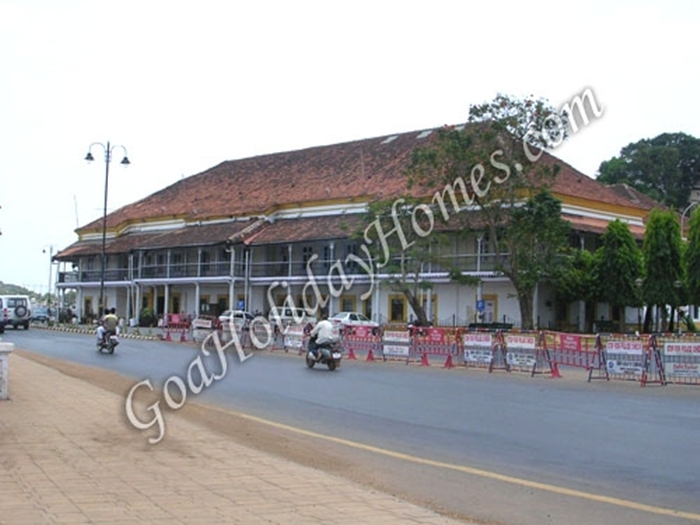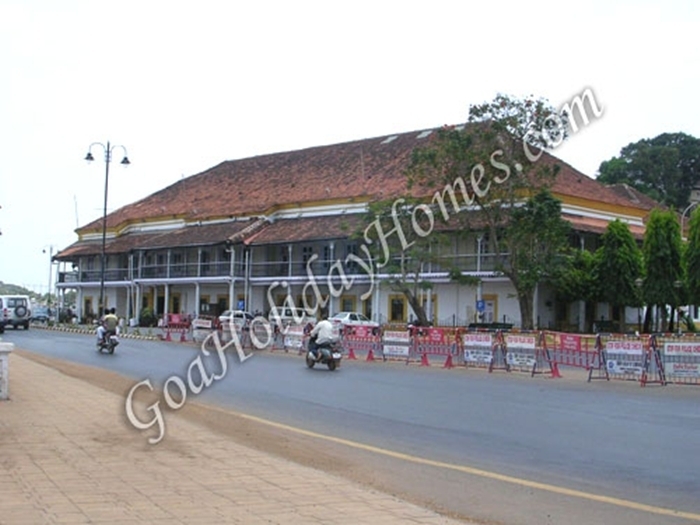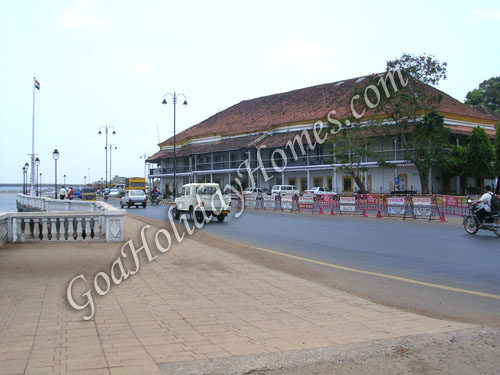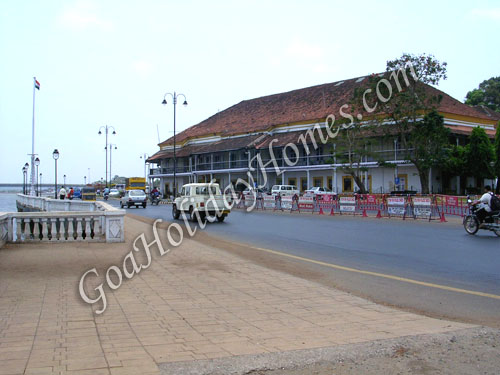The Idalcao Palace

It was built in 1500 by Yusuf Adil Shah and was primarily built as a riverside pleasure, but was fortified and later served as a strategic point of defense for the Portuguese who added it to their artillery strength and also as the first custom post, wherein the cargo from foreign ships was checked here.
It was the official place of residence for most of the Portuguese Viceroys in 1759 who would stay here before embarking on the return voyage to Portugal. A small chapel was built within the palace in 1760 when the Viceroy moved to Panjim from Old Goa.
In 1918, when the Viceroy moved to the Cabo Palace on the headland, the Cross-from the chapel was shifted to Fontainhas, while the reredos of the main altar was shifted to the Church of Immaculate Conception at Panjim. After 1918, it was utilized for most of the government departments including the Captain of Ports and the Attorney General. It became well known as the Secretariat since Goa attained liberation and served initially the Union Territory of Goa, Daman and Diu and presently, the State of Goa. It is the administrative place of the Legislative Assembly of the state.
The Adil Shah Palace has undergone quite a lot of modifications since its existence over 500 years. It was initially modified by the Portuguese in 1613 wherein the main entrance was through the arched doorway on the opposite side, away from the river. The crest of the viceroys above the main doorway was replaced by the national emblem, The Asoka Chakra or Buddhist Wheel of Law, which appears at the center of the national flag. The red tiled roof is quite distinctive, with the slope of each separate room varying in size and height producing an interesting effect.
Contact Details
Get Directions:



